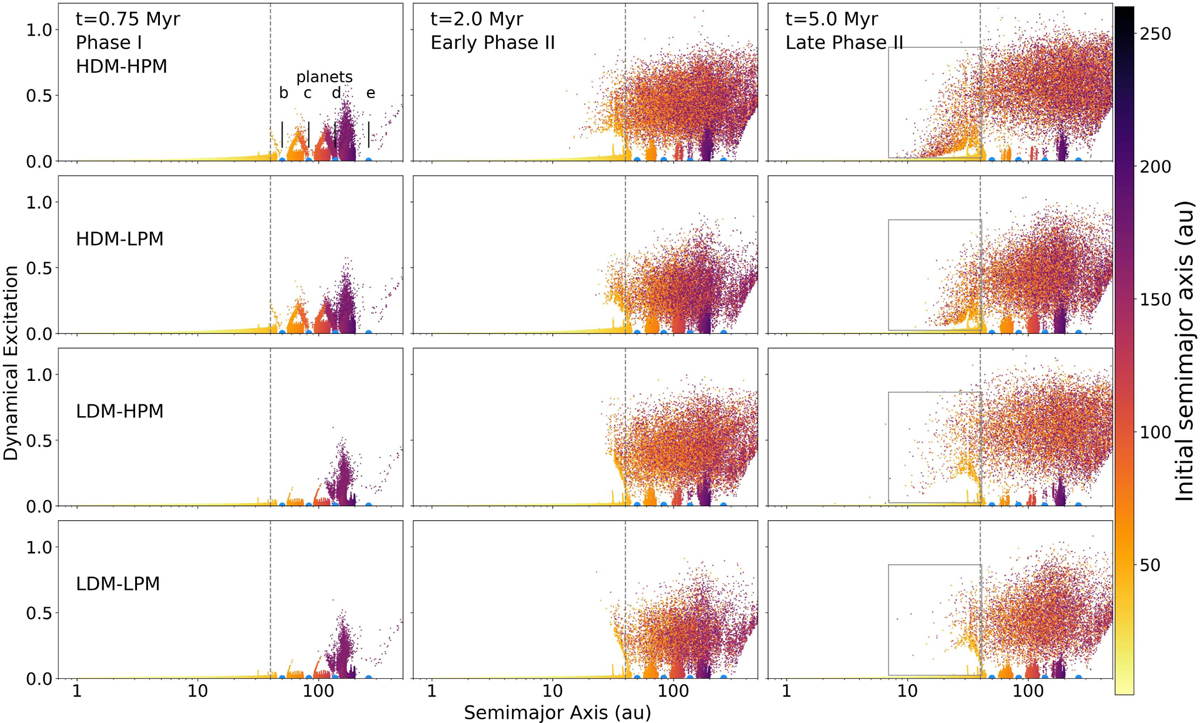Fig. 1

Download original image
Dynamical excitation of the planetesimal disc at 0.75, 2 and 5 Myr in the four simulated scenarios. Dynamical excitation accounts for the contributions of both eccentricity and inclination and is defined as ![]() (Petit et al. 2001). The colour bar indicates the region in the disc from which the planetesimals originated (in units of au). The dashed grey line at 40 au indicate the division between inner and outer disc. The rectangles in the rightmost panels mark the “fountain” feature we refer to in the main text, i.e. the damping of the orbital eccentricities of the excited planetesimals by aerodynamic drag that creates the implanted planetesimals. The light blue filled circles indicate the location of the four simulated planets in the disc. First row: high disc mass – high planetary mass. Second row: high disc mass – low planetary mass. Third row: low disc – high planetary mass. Fourth row: low disc mass – low planetary mass.
(Petit et al. 2001). The colour bar indicates the region in the disc from which the planetesimals originated (in units of au). The dashed grey line at 40 au indicate the division between inner and outer disc. The rectangles in the rightmost panels mark the “fountain” feature we refer to in the main text, i.e. the damping of the orbital eccentricities of the excited planetesimals by aerodynamic drag that creates the implanted planetesimals. The light blue filled circles indicate the location of the four simulated planets in the disc. First row: high disc mass – high planetary mass. Second row: high disc mass – low planetary mass. Third row: low disc – high planetary mass. Fourth row: low disc mass – low planetary mass.
Current usage metrics show cumulative count of Article Views (full-text article views including HTML views, PDF and ePub downloads, according to the available data) and Abstracts Views on Vision4Press platform.
Data correspond to usage on the plateform after 2015. The current usage metrics is available 48-96 hours after online publication and is updated daily on week days.
Initial download of the metrics may take a while.


